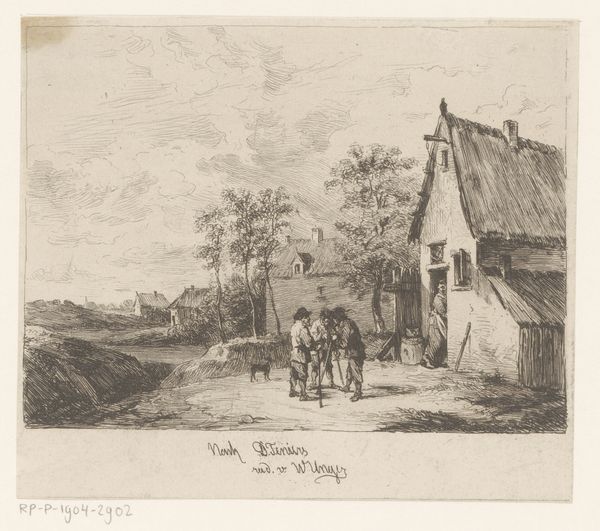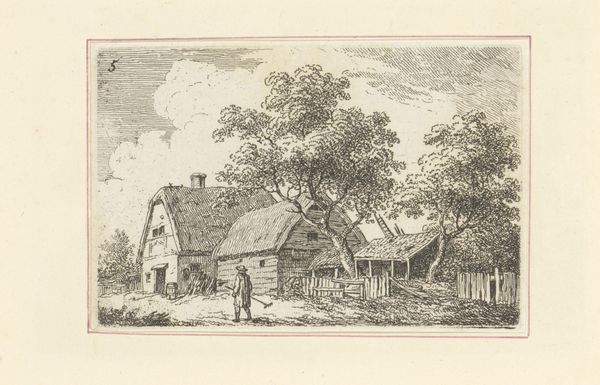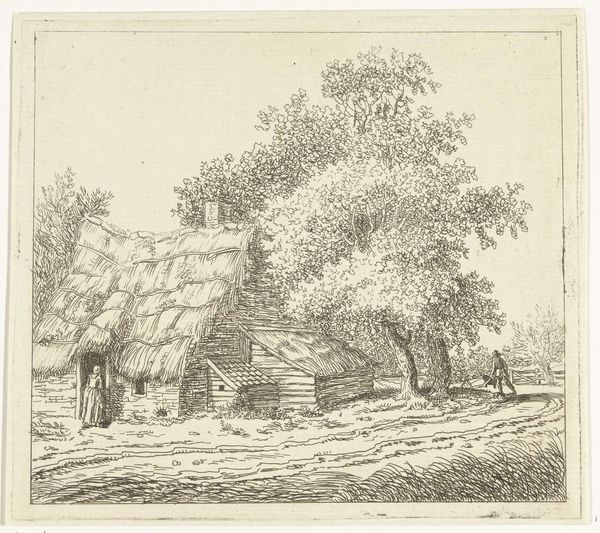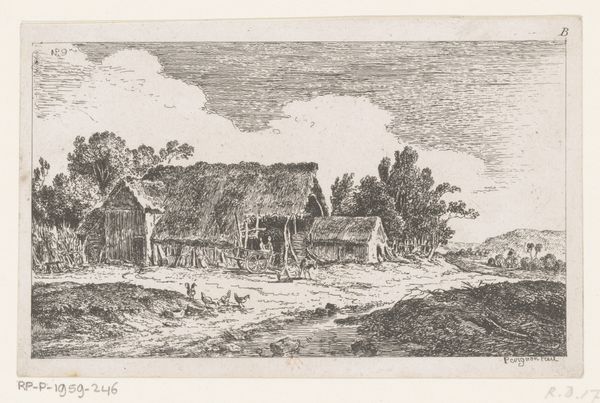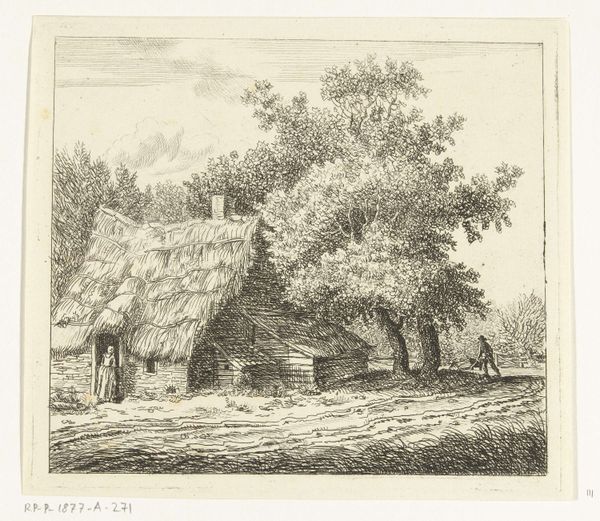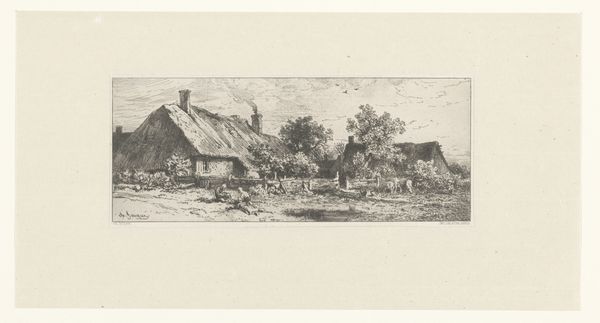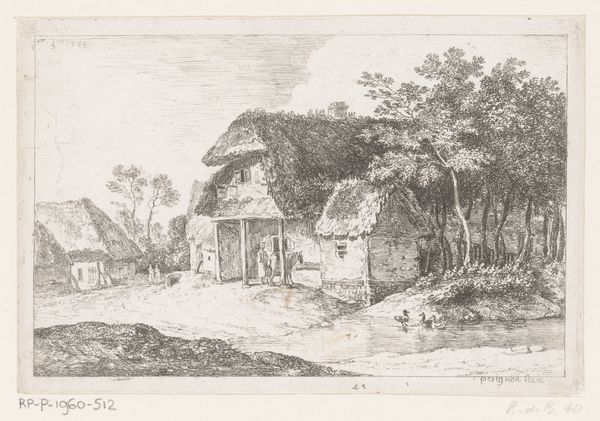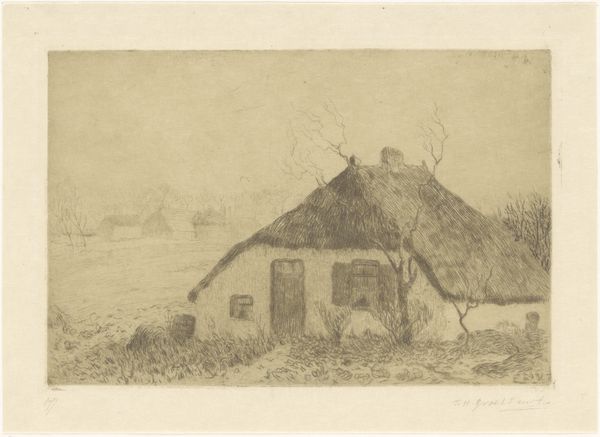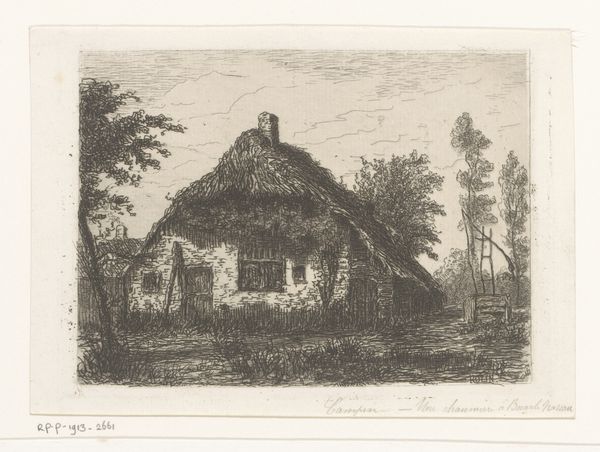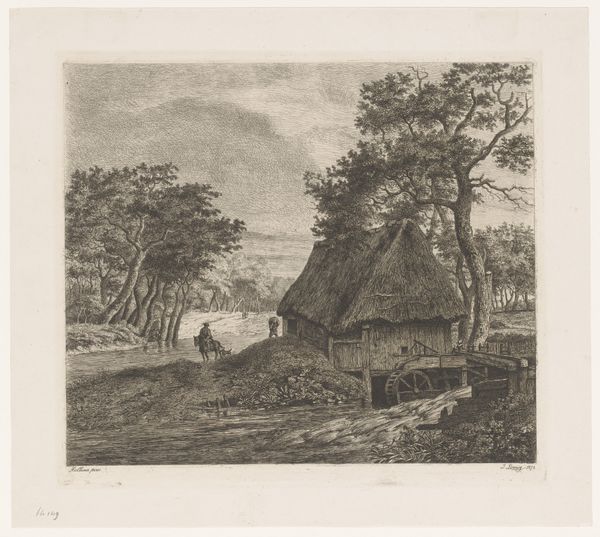
etching
#
dutch-golden-age
#
etching
#
old engraving style
#
landscape
#
etching
#
genre-painting
#
botanical art
#
realism
Dimensions: height 97 mm, width 141 mm
Copyright: Rijks Museum: Open Domain
Editor: This is "Paard en wagen bij boerderij buiten Zwolle," or "Horse and cart at a farm outside Zwolle," an etching by Anthonie van den Bos, made sometime between 1773 and 1838. The thatched roof of the farmhouse is particularly striking, but I wonder about the purpose behind this quiet scene of rural life. What story is it trying to tell? Curator: That's a very good question. Genre paintings like this gained popularity during the Dutch Golden Age as a means of representing daily life, often idealizing rural existence. But it’s crucial to consider that representation within its historical context. How do you think a print like this might have been received in a society undergoing significant urban development? Editor: It's interesting you ask that. Perhaps, then, it was meant as a sort of nostalgic piece? An idealized view of the countryside at a time when more and more people were moving to cities? Curator: Precisely! The burgeoning merchant class had disposable income and a growing appetite for images that reflected a sense of national identity and pride in the Dutch landscape, and the virtues associated with country life. But did everyone have access to these images, and if not, what effect did that have on public opinion of agrarian culture? Editor: So it’s not just a depiction of rural life, but a commentary on it. Were there other artists creating similar images at the time? Curator: Absolutely, this piece participates in a wider trend, showing the art market was starting to cater for particular taste-makers with specific socio-economic and perhaps, political needs. Editor: It makes you think about who could afford to buy this work, what their motivations were. Curator: Yes, thinking about images as social objects, circulating within specific cultural and economic systems, unlocks new layers of understanding and gives us more context than simply its aesthetic value.
Comments
No comments
Be the first to comment and join the conversation on the ultimate creative platform.
